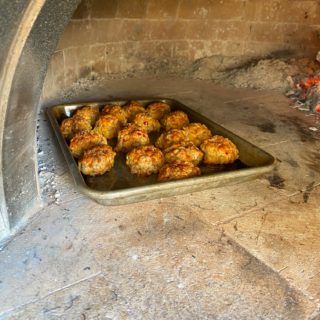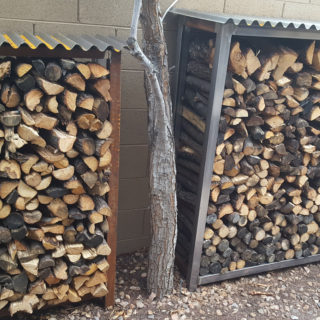
What’s your favorite part of a pizza? What’s one element that can make or break your pizza experience? What’s got the perfect blend of crunch and chew? What tastes best with a little char and bubble? What pizza component should have leopard spots?
If your answer was CRUST for all of the above…we should be friends!
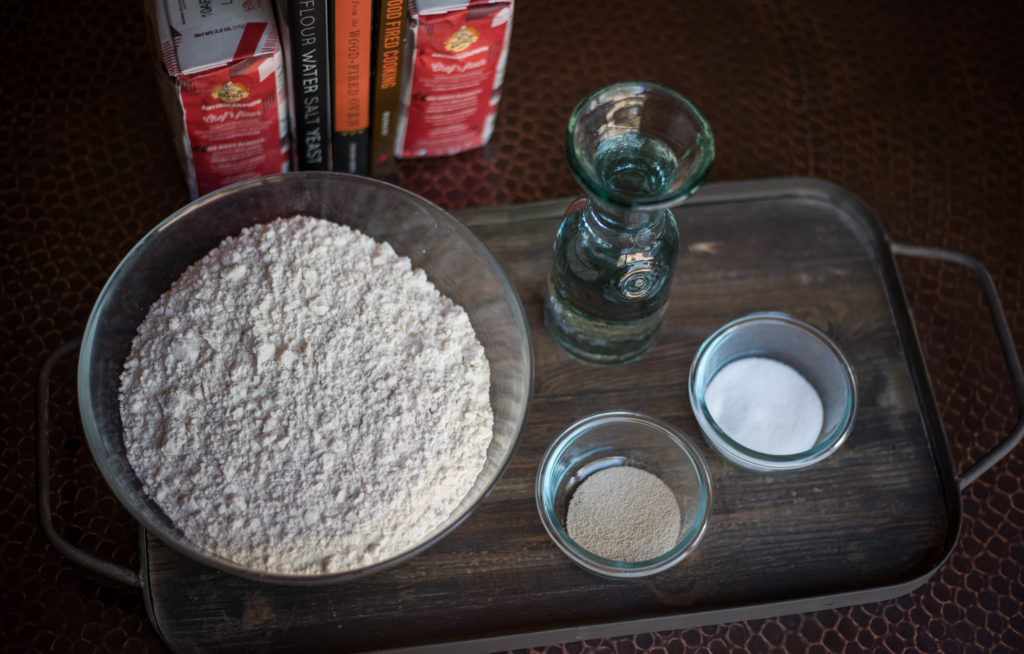
Mr. Fanatic is the official dough creator in our household. We have been experimenting and taste testing at our favorite local spots in an effort to perfect this one piece of the pizza pie since before we had our own oven! Who knew that four humble ingredients could be combined to create so many dough variations?! Sure, some renditions include another ingredient or two, but most are simply flour, water, yeast and salt. That’s it! Flour, water, yeast and salt! Such humble ingredients, yet they create a magical base for deliciousness. Altering any ingredient, even slightly, can completely change the texture and/or flavor of your dough.
We have gone through several different recipes. The first was a recipe given to us by the friend of a friend. It was really good, but never really puffed enough around the edge and often had a hint of burnt flavor. Initially we attributed the burnt quality to excess flour on the dough used to control moisture while working it. However, we later discovered it was more likely the sugar in this recipe. Research indicates that at the high temperatures used in wood fired cooking, the sugar will burn and cause a slightly bitter flavor. This dough was also low on chewiness.

Then we tried a copycat recipe for what was supposedly the dough from our favorite pizza spot. This dough came out very wet. It completely lacked bloom (the puff around the edge) and was relatively tasteless. We did not make this version many times before moving on to another option.
Although, it still doesn’t match the doughs from our favorite pizzerias, this recipe is as close as we have been able to get so far. We owe it all to Peter Reinhart and persistence. The crunch to chew factor is excellent! The flavor is good, but we would like to enhance the sour quality. We have used it for true Neopolitan style pizza and a more crispy, crunchy American variety. The appeal is universal among our friends and family.

Super bloom on this crust!!
A few tips and tricks we have learned along the way. Precision is important in pizza crust, definitely weigh your ingredients. Don’t measure cups and spoons. Believe it or not, a decent food scale can be purchased for around $15. We use the Ozeri scale that is available on Amazon. Weighing ingredients will help you achieve a more consistent end result. Dough, and in particular yeast, is sensitive to water temperature. If you live in a cooler location than we do in Phoenix, this may be less of a factor because your tap water may be the same all year. We can’t get cool water from the tap during the summer months, so ice comes into play frequently. Don’t rush the process. The hands on time is short, but it takes a couple of days for the entire process start to finish. Allow the dough this time, you will not regret it!
Without further adieu…let’s make dough!
First gather your gear! You will need your four simple ingredients, a food scale, bowls, dough scraper, wooden spoon, and a stand mixer.
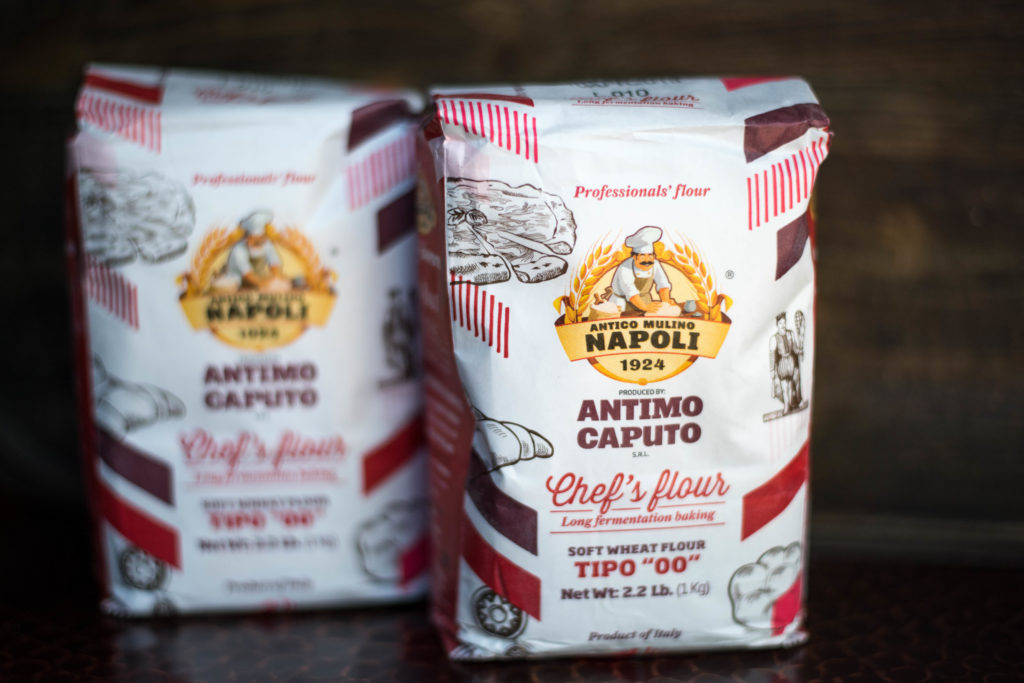
Start by weighing each ingredient in its own bowl. The best way is to put the bowl on the scale prior to turning it on so it zeroes out to that weight and you can simply add the ingredients to reach the desired weight.
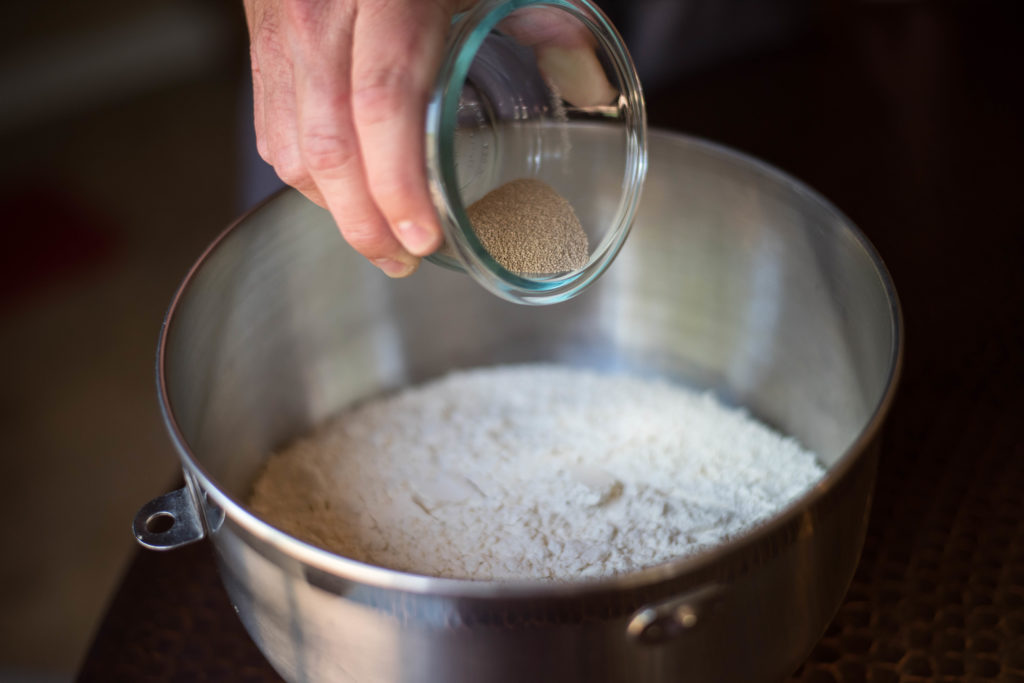
Add the flour, yeast and salt into the bowl of a stand mixer and combine well with a wooden spoon.
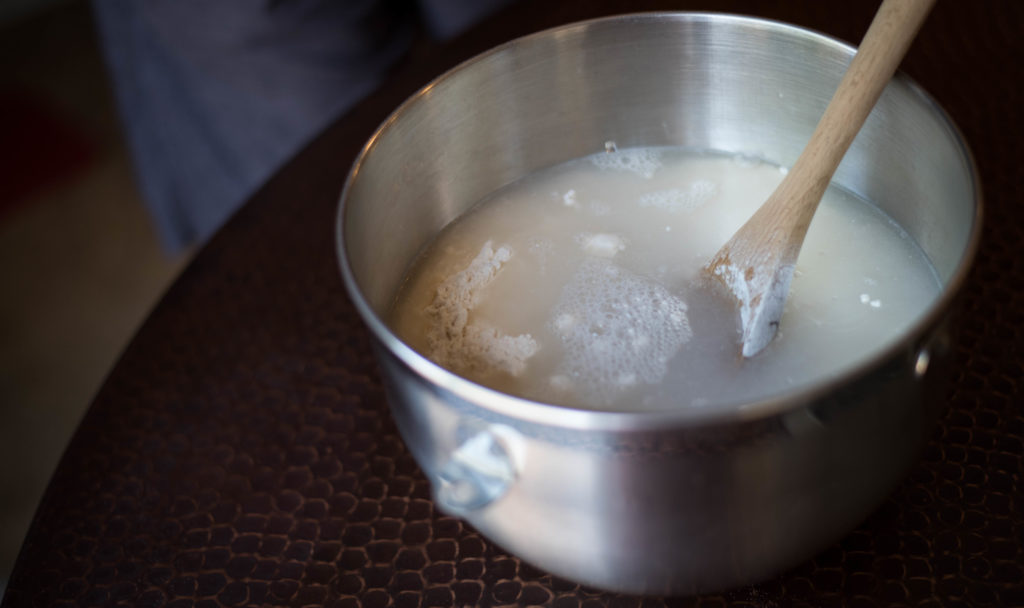
Add the water and using the wooden spoon mix for about 30 seconds just until the water and dry ingredients are combined and a shaggy mass forms.
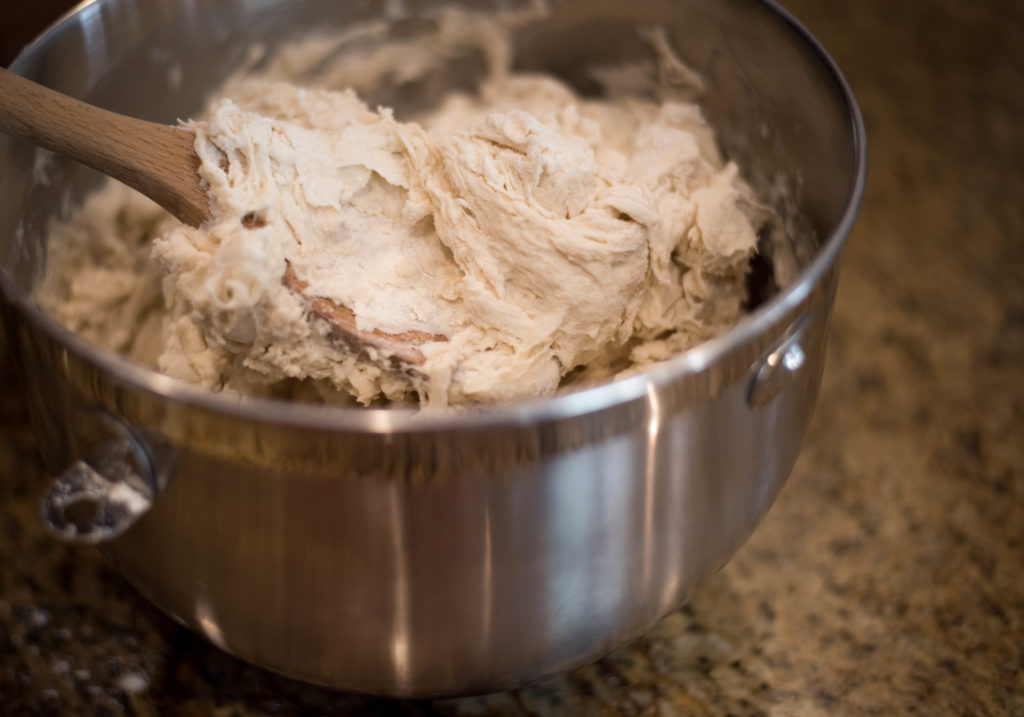
Let the dough rest for 7 minutes. Then using the stand mixer with dough hook attached, mix on speed two for no more than 3 minutes until the dough is smooth. Do not overtax or the dough will be come tough and difficult to turn out.
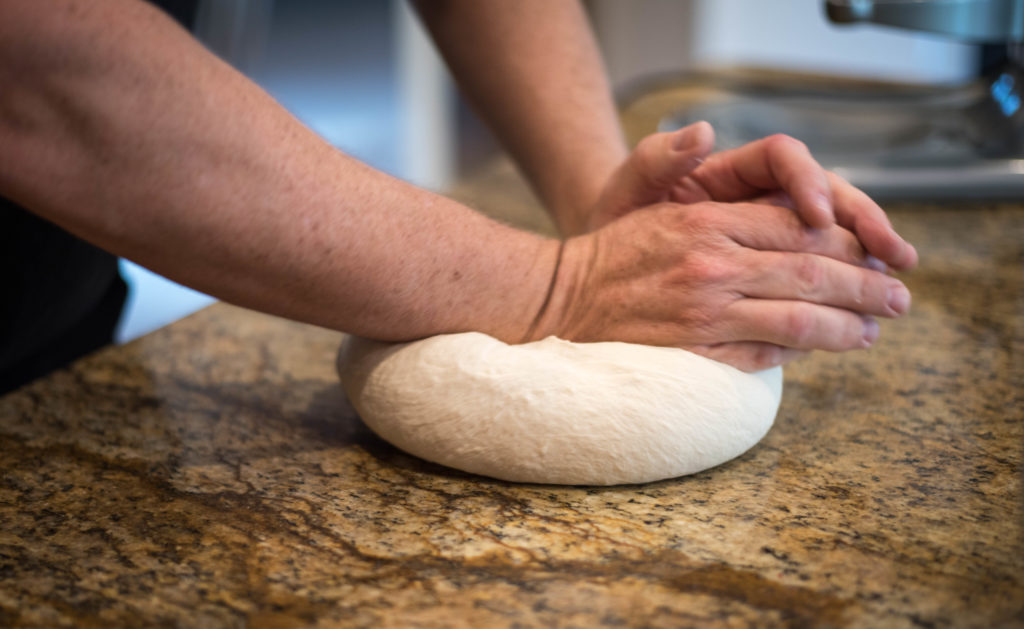
Turn the dough out onto a lightly oiled surface and knead by hand for about one minute. The dough should be tacky (not sticky) and feel very supple, not stiff.
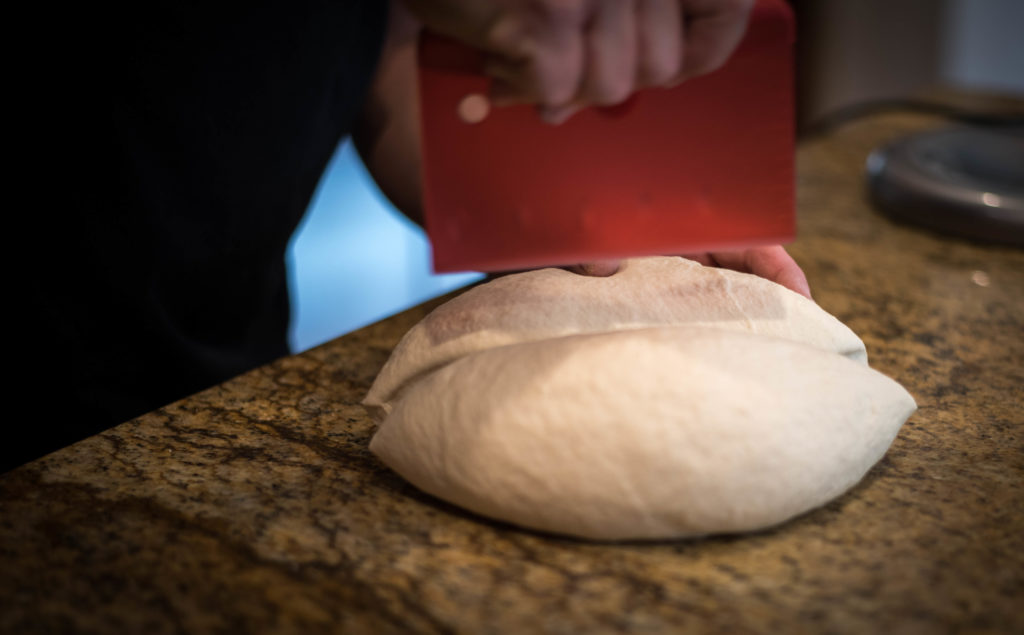
Divide the dough into roughly equal sized balls using your bench scraper.
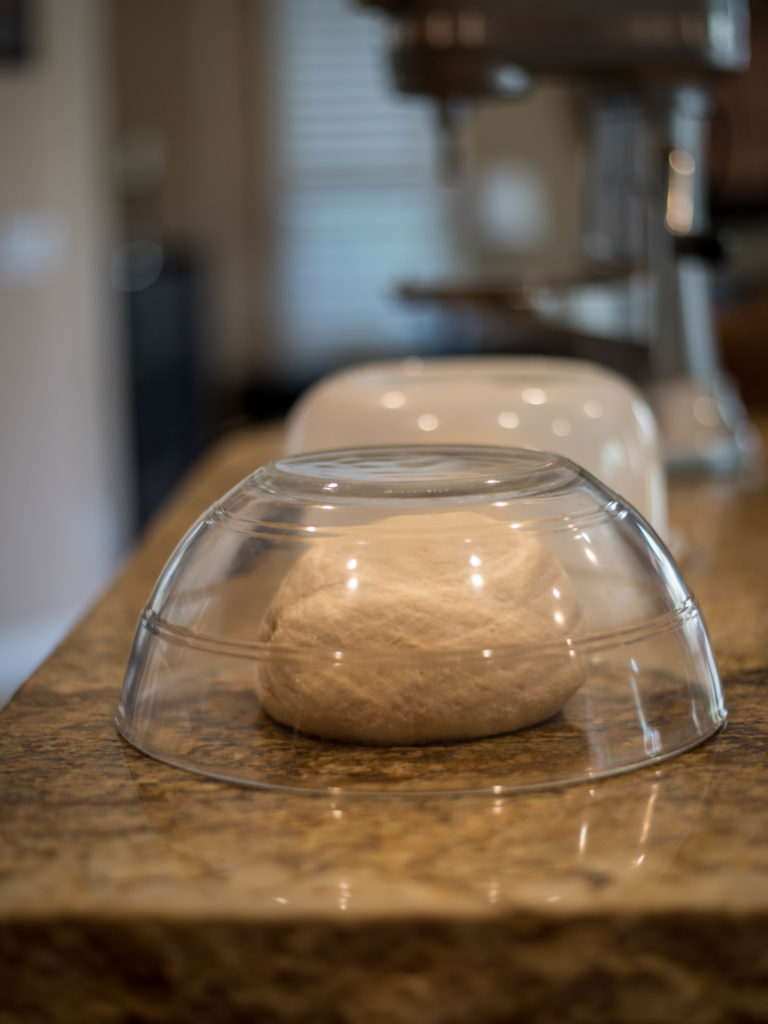
Cover each ball with a bowl and let it rest for 30-35 minutes.
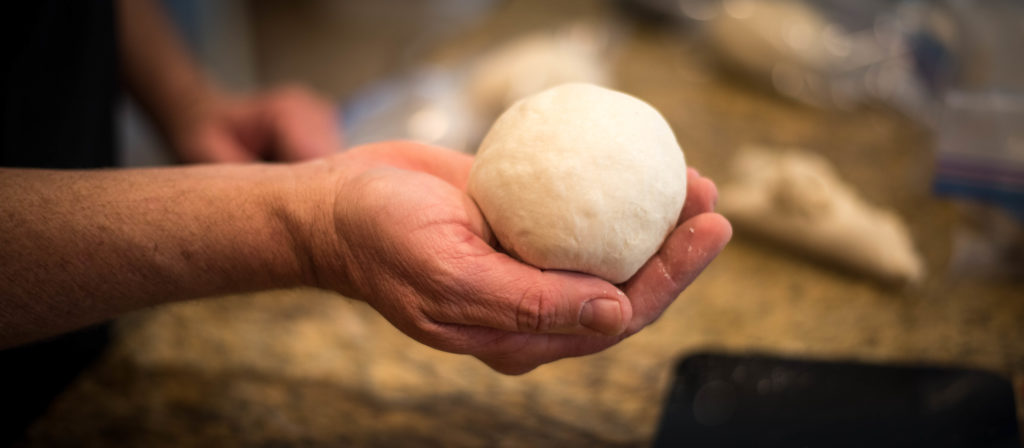
Divide the dough into equal size pieces (we use approximately 8 ounces each) and form each piece into a ball. We don’t have space to use a sheet pan and don’t have a dough box, so we place each ball into its own lightly oiled quart size ziplock bag. Place the bags in the refrigerator to slowly ferment overnight. Dough will keep in the refrigerator for up to three days.
Remove the dough from the refrigerator 2-3 hours before you plan to make pizza. You want the dough as close to room temperature as possible in order to make it easy to turn out. Now, turn out the dough and top it with your favorite ingredients to create perfectly delicious pizza!
After 48 hours you can place the bags in the freezer where they will keep for up to three months. Be sure to move them to the refrigerator the day before you want to make pizza to thaw. Then use as normal.
The attached recipe will make enough dough for nine 8 ounce pizza dough balls often with a little to spare.
To be sure you don’t miss a moment of wood fired fun, please like us on Facebook and follow us on Instagram @woodfiredfanatics!
- 1276 grams 00 flour (we use Antimo Caputo)
- 25 grams of fine sea salt
- 7 grams of dry active yeast
- 865 grams of water at about 65 degrees
- Combine flour, salt and yeast in the bowl for a stand mixer by hand with a spoon. Add water and mix all for about 30 seconds by hand until it forms a shaggy mass. Let dough rest for 5-7 minutes. Using the dough hook attachment, mix on second speed for no more than 3 minutes, or until the dough is smooth and supple. Do not over mix or the dough will become tough and difficult to turn out.
- Transfer the dough to a slightly oiled work surface. Knead the dough by hand for a about one minute until the dough becomes more smooth than shaggy, do not over knead. Split the large dough ball into two equal pieces. Cover the each dough ball with a bowl and let it rest for 30-35 minutes.
- Divide the dough into 8 ounce pieces and form each piece into a ball. Place each dough ball in a quart size zip top bag that has been sprayed lightly with olive oil cooking spray. Place the bags into the refrigerator to slowly ferment for about 48 hours, or at the very least overnight. (They will keep in the refrigerator for up to three days.)
- Remove the bags from the refrigerator 2-3 hours before you plan to bake the pizza to bring up to room temperature. This will make the dough easier to turn out as you prepare to make pizza.
- Note: After the 48 hours in the refrigerator, you can place the bags with dough in the freezer. They will keep for up to three months. Move them to the refrigerator the day before you plan to make the pizzas to defrost. The following day you can use as above.

